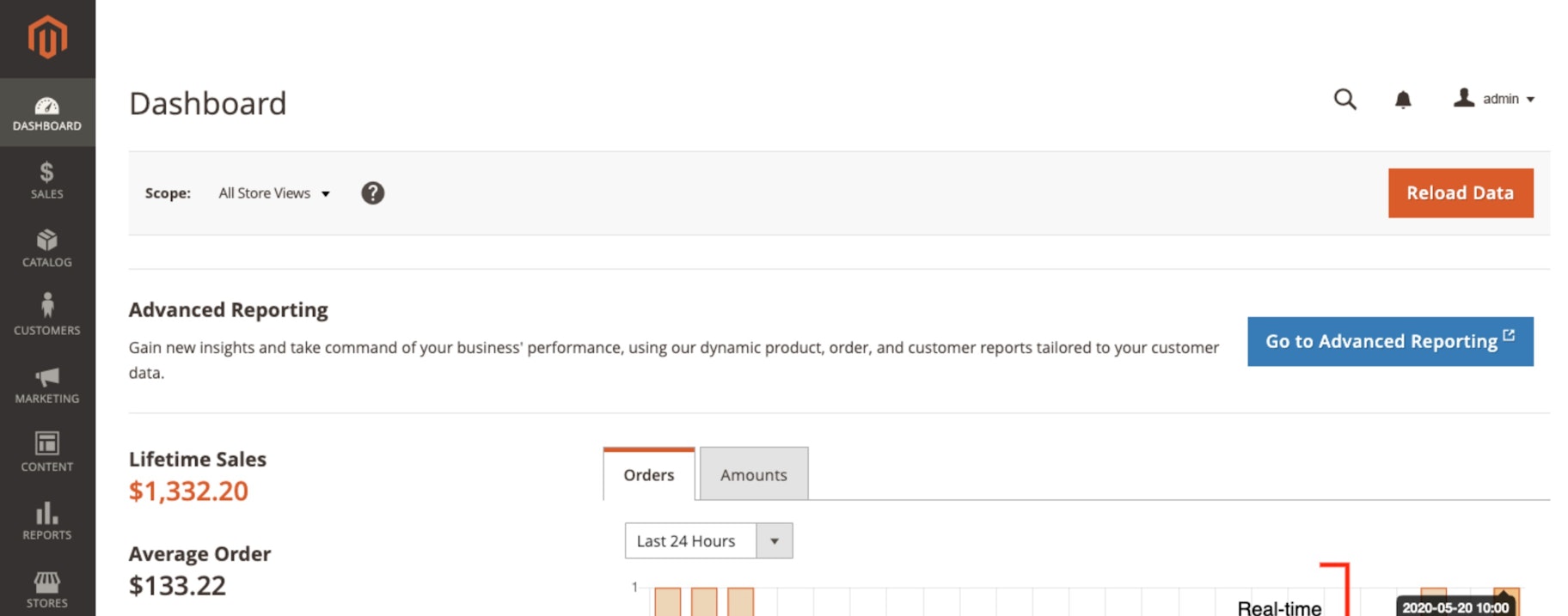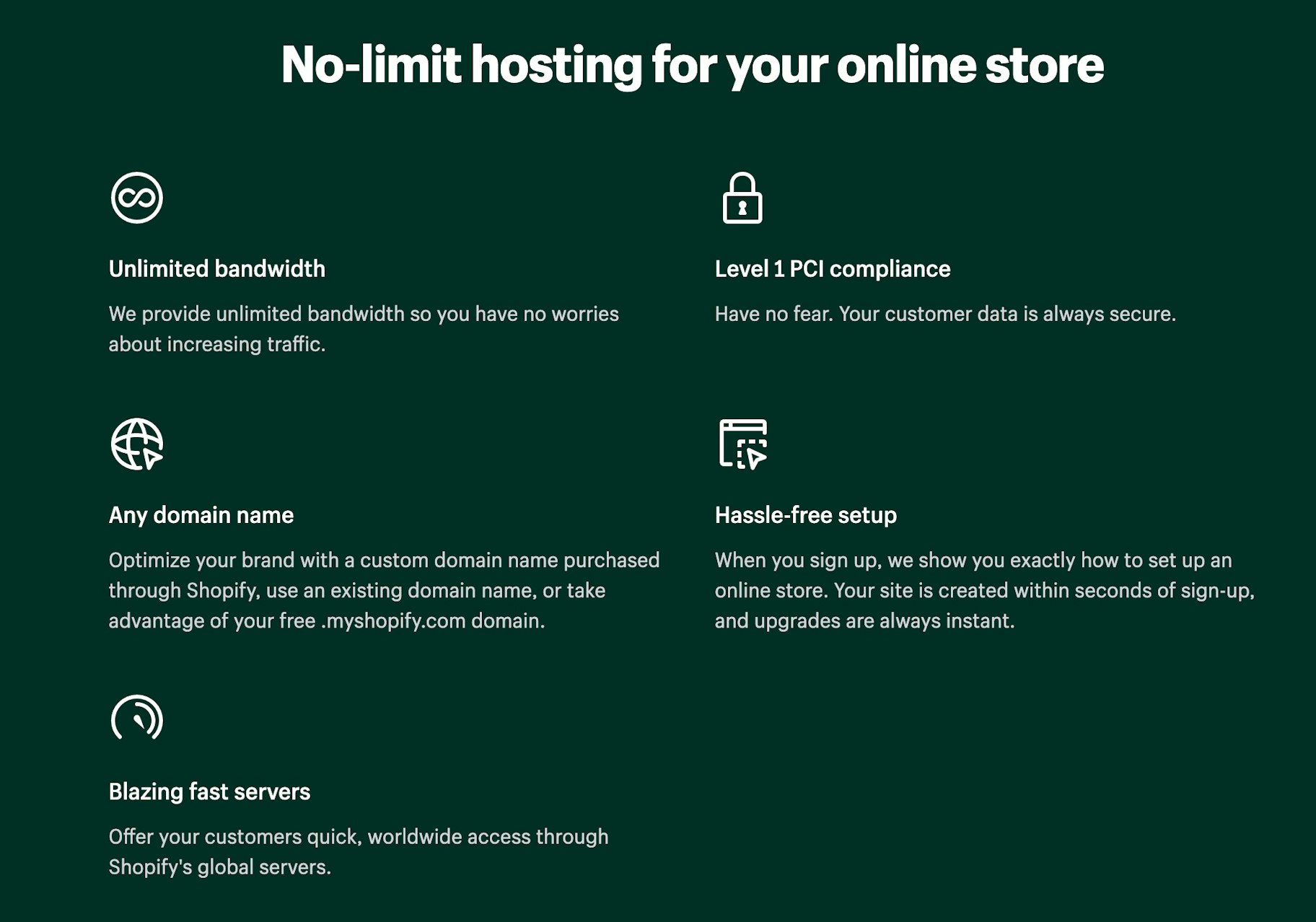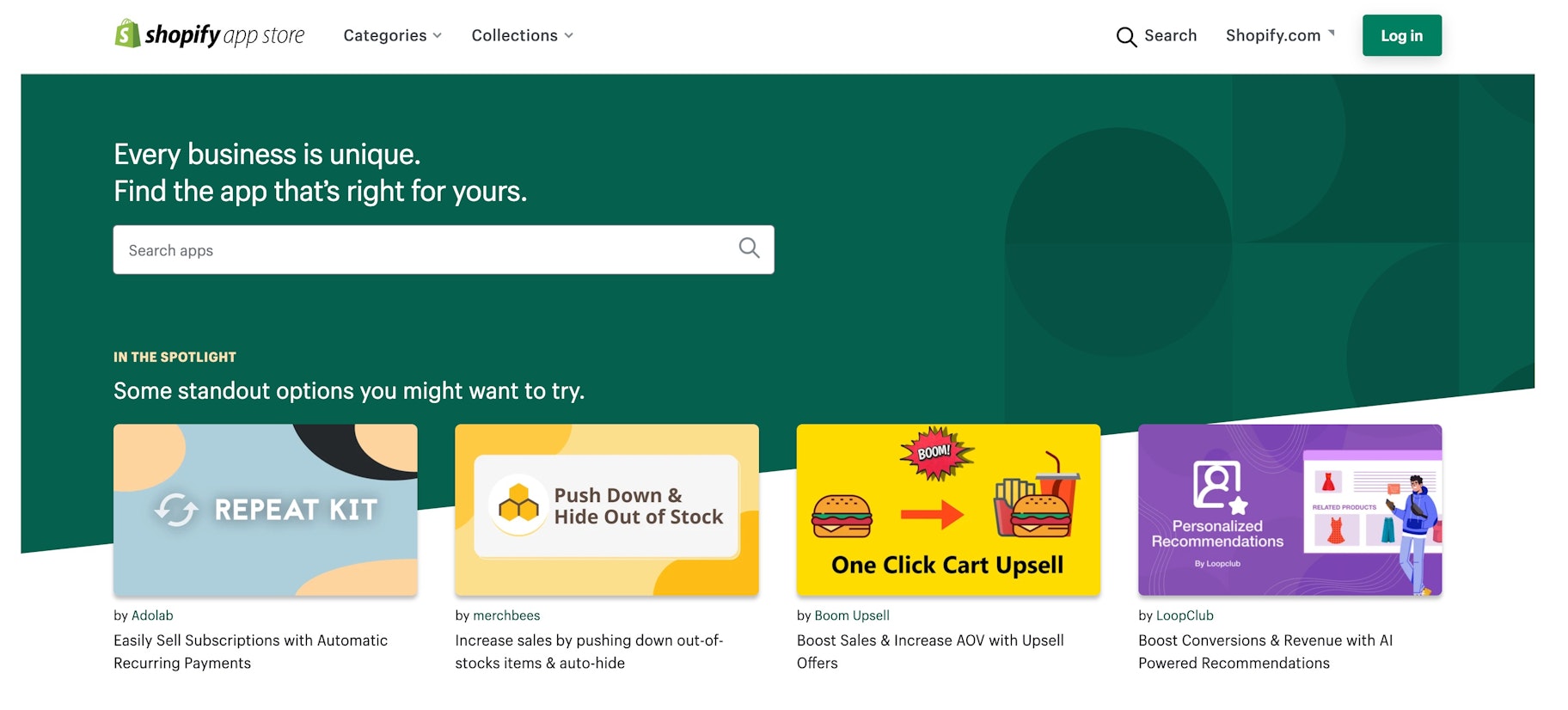If there’s one thing all businesses had to transition quickly to last year, it was online selling. Most retail activities shifted from brick and mortar to online storefronts.
But even as the pandemic starts to fade away, people are going to keep buying products online. This calls for the need to build an ecommerce store, and the good news is that there is no shortage of platforms available to choose from.
Let’s look at two of the titans in the ecommerce space: Magento & Shopify.
If based on your research, the competition between the two seems fierce, that’s because it is. But don’t worry; we’re here to help you make the right decision based on your needs.
In this post, we’ll do a detailed Shopify vs Magento comparison to help you identify the right platform for your store. You’ll learn about the essential features of both platforms, making it easy to compare and choose among them. Let’s dive right in.
(Disclaimer: This website is a part of Shopify inc. media properties. Although we strive to share factual and objective information, this post may contain biased opinions).

Don’t wait for someone else to do it. Hire yourself and start calling the shots.
Shopify vs Magento: An Overview
Before we compare Shopify and Magento head-to-head, let’s have a quick overview of both platforms.
What is Shopify?
Shopify is a fully-hosted ecommerce platform offering web hosting, online storage, and unlimited bandwidth in one plan. It comes with a no-code store builder that allows anyone to build their own store—no programming skills required. Plus, there’s a theme editor you can use to customize and complete your store easily.

What is Magento?
Magneto is an open-source ecommerce platform designed to facilitate enterprise ecommerce brands. Being open-source means, it requires you to arrange and set up your own hosting. This can be inconvenient for small business owners who aren’t familiar with how web hosting works. But Magento is highly flexible, meaning it offers plenty of ways to customize your store (note that you need to be well-versed in PHP to use Magento on your own).
What is Magento 2?
Magento 2 is the latest version of the popular Magento enterprise commerce platform. Magento 2 supports the latest PHP and is faster in all-around frontend performance. Existing Magento users can upgrade to Magento 2 to improve their overall site speed.

What Is the Difference Between Shopify and Magento?
The key difference is that Shopify is a fully hosted ecommerce platform, while Magento is a self-hosted solution for building enterprise stores. So when you sign up for Shopify, you have peace of mind that all your infrastructure needs are already covered out-of-the-box.
Shopify vs Magento (or Shopify vs Magento 2): How They Compare
Now that you have the background of both platforms, let’s see how they compare in ease of use, design, and more.
Ease of Use
An ecommerce platform needs to be easy to use for you to take full advantage of it. The simpler the solution, the more comfortable you’ll be experimenting with the functionality.
Shopify makes it incredibly easy to dive in and bring your store to life. Once you start your 14-day free trial, it’ll direct you to an admin dashboard, where all of the tools you need are arranged neatly into easy-to-understand sections.
Shopify’s drag-and-drop editor allows users to customize their website however they choose, adding and removing modules like countdown timers, images, and text boxes at will.

Magento, on the other hand, isn’t as easy to use. Though the platform has a clean and sophisticated interface, it requires coding expertise to navigate and use effectively. Generally, you’ll need to either pay for a coding professional to help you design your website with Magento or learn how to code yourself.
So clearly, Shopify is simpler to use than Magento.
Design and Themes
Magento and Shopify come with access to various themes to help ensure you don't have to build your entire site from scratch.
Shopify's selection of theme options is vast, with over 100+ free and premium designs for you to explore. With Shopify's intuitive theme editor, you can customize any theme to suit your needs. You can add your own content, logos, and product images.
Alternatively, you can skip the themes and create your design from the ground up if you prefer. Shopify offers a convenient drag-and-drop builder, making it easy to add new elements to your website. You can add your own logo, adjust colors to fit your branding, and tweak the appearance of various parts of your site.
Magento offers fewer themes compared to Shopify. There are about 16 themes to explore in total, and they come in a selection of free and paid options. Around 10 of the themes are mobile responsive, although you can add responsiveness to other themes using code.
Developers can add their own custom themes and update the designs from the backend of their business, but this requires some extensive coding. You can add product sliders to your page, create animations, and include newsletter functionality in your website.
Overall, Shopify has a bigger range of themes than Magento. And Shopify's themes are also easier to tweak as they don't require you to apply code.
Hosting
Hosting is probably the primary point that separates Shopify and Magento. Shopify will host your website on its own servers, while Magento relies on third-party web hosting to power your site.
Ecommerce hosting is included across all Shopify plans, and no extra expense is charged toyou. While Magento is free to install, you’ll need to pay for web hosting to get things up and running.
If you’re looking for an all-in-one ecommerce platform, Shopify is the better choice.

Ecommerce Features
Shopify and Magento are both products perfect for increasing your online sales and generating new store opportunities.
Shopify comes with a host of ecommerce tools already built into your monthly subscription package, including:
- Abandoned cart recovery
- Checkout pages with Shopify Payments
- Access to multiple payment options
- Multi-channel selling across social media
- Partnerships with leading delivery companies
- Upsell, cross-sell, and marketing tools
You can also expand the functionality of your store as much as you like by tapping into the Shopify App market. Here, there are hundreds of tools built to improve your chances of earning crucial conversions. Check out these 16 best free Shopify apps to help grow your business.
Magento also has an excellent range of sales features available, starting with a unique inventory system, where you can bulk import information from a database, experiment with multiple product variants, and access total revenue reports. Other features include:
- Multi-channel selling options on social media and eBay
- Checkout customization with branding
- Abandoned cart recovery
- Discounts and coupons
- Access to additional (premium) extensions
Both Shopify and Magento offer tools to help you sell online, but Shopify has a bigger, more impressive range. Plus, Shopify makes it easy to engage in social selling, which is a hassle to do on Magento.
Inventory Management
Inventory Management tools are essential for running a well-organized store. Both Magento and Shopify deliver features to help with this, including product tracking tools, inventory importing, filtering, and categories.
Shopify’s user-friendly interface shines here. You can use your dashboard to examine your inventory without any hassles. You can customize various form fields for each product, including product name, image, and category.
What about Magento? With Magento’s inventory management feature, you can be more granular about how you label your products, with sizes, colors, and quantities. Moreover, the platform lets you integrate custom extensions for tracking things like offline sales.
Marketing Capabilities
Magento and Shopify both come with a powerful range of marketing features to boost your chances of sales.
Shopify has a built-in email tool you can use to promote your products and share updates too. There’s also a range of amazing integrations you can access through Shopify for things like social media selling. Moreover, Shopify allows companies to sell in a range of languages, so you can adapt your marketing strategy to suit the customers you want to reach.

Magento is a little less advanced from a marketing perspective. You’ll need to use apps and extensions to run email campaigns or create social selling strategies. Once again, you’ll need a web developer to create more bespoke marketing connections.
On the plus side, both Magento and Shopify have access to various SEO tools. You can edit the page title and description on both platforms to improve your chances of ranking higher in search engines.
Payment Processors
Payment processing is among the most important features you'll need to consider when choosing an ecommerce platform for your business. Both Shopify and Magento allow companies to take credit cards and online payments from customers using various payment processors.
Shopify's own payment processor, "Shopify Payments," will ensure you don't have to pay any transaction fees when customers buy from you. However, if you prefer to use a payment processor your customers already feel comfortable with, you can still access things like PayPal and Amazon Pay. These products do have transaction fees to consider.
Magento also offers access to various payment options, though they require more work to set up. You may need a developer to set up your payment processing system if you aren't familiar with PHP. But Magento has no integrated payment processor, meaning you'll need to pay a transaction fee no matter which third-party gateway you use for your store.
While Magento offers a few more ways to accept international payments, Shopify is the best choice for setting up payment processing quickly. Plus, Shopify's integrated processor will help you avoid the transaction fee that you would otherwise have to pay with Magento.
Apps and Add-Ons
Apps and add-ons are a common part of building a successful store these days.
Shopify’s App Store has over 6000 free and paid apps to offer, including integrations with some of the most popular tools in the world, like Oberlo. There are also apps for marketing, customer service, merchandising, and many other aspects of ecommerce. Shopify offers one-click installation for most apps.

Magento has around 4000 extensions to offer in its marketplace, with countless options for things like payment processing, SEO, and more. You will need some basic coding knowledge to install these apps, and it’s worth noting that most of them will cost an extra fee.
If you plan to extend the functionality of your store, Shopify’s apps are more polished and easier to use than Magento’s.
Scalability
Your ecommerce platform needs to be able to grow with your business.
That’s why it’s so important to look for a solution that can accommodate not just what your business is doing now but what it might be doing in the future.
With Shopify, scaling your store up or down is as easy as switching your subscription plan. Plans range from Shopify Lite (For a buy button on an existing site) to Shopify Advanced for larger merchants. There are also enterprise-grade options in the form of Shopify Plus, where you can access priority support and different plug-and-play integrations.
Magento requires a little more technical insight to scale – but the service can still grow with your business. Once you learn how to use the Magento open platform, it can scale as far as you like, managing all kinds of traffic spikes and sales demands. A standard Magento website can host up to 250,000 products.
Selling on Shopify vs Magento
What are you going to sell?
With Shopify, you’ll have the opportunity to sell both physical and digital goods side-by-side. You can even set up appointments and booking pages to sell your time and professional consultations. To sell services or downloads, you simply uncheck the shipping box when uploading a new product page.
If you’re selling digital products like ebooks, you’ll need an add-on from the Shopify marketplace to allow you to provide your users with a downloadable link. You can also access paid add-ons suitable for creating customer subscriptions.
Magento’s open-source functionality is a bonus again here because it ensures you can sell anything you like. As long as you have the developer skills required to create your store, you can sell everything from services to digital items and physical products. Plus, you can attract both B2C and B2B customers to your store too.
Shopify is a great choice for small businesses, as it allows you to start selling a wide range of items quickly. You can sell jewelry, clothing, skincare items, and even food products via Shopify.
Conclusion
As you can see, Shopify and Magento both have features to help you build an online store.
Shopify is a better choice if you want to take a DIY approach to online store building. Plus, Shopify’s themes make it easy to create a personal online brand. What’s more, Shopify offers everything from hosting to online storage and from sales tools to marketing features in one package.
Magento requires PHP skills to get around, and most small business owners don’t have time to learn them. Shopify, with its no-code drag-and-drop site builder, reduces the stress of building a custom storefront. If you’re just starting out in ecommerce, it’s best to use Shopify.
Want to Learn More?
- Shopify vs. Etsy: Which Is Better in 2021
- Shopify vs. Squarespace: Which Is the Best Option for You?
- Wix vs. Shopify: Which Is Best for Your Needs?
- Shopify vs. WordPress: Which Is Better for Ecommerce?





